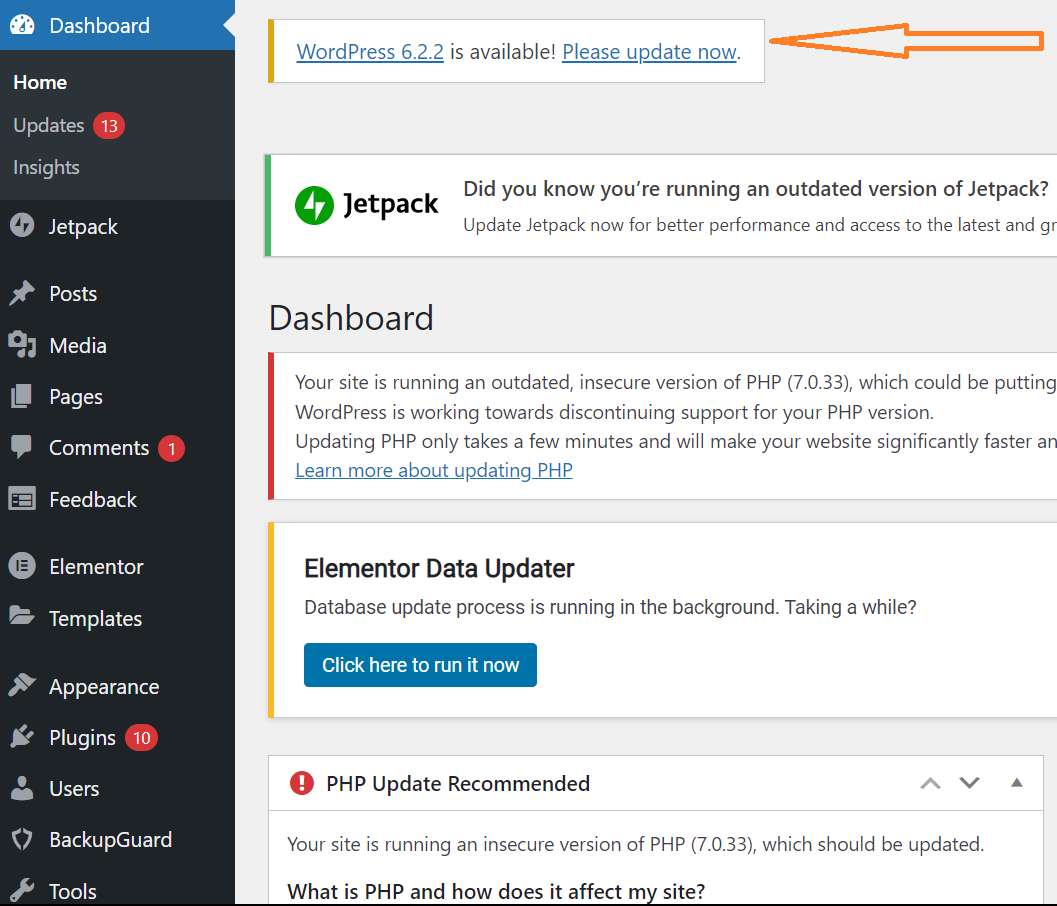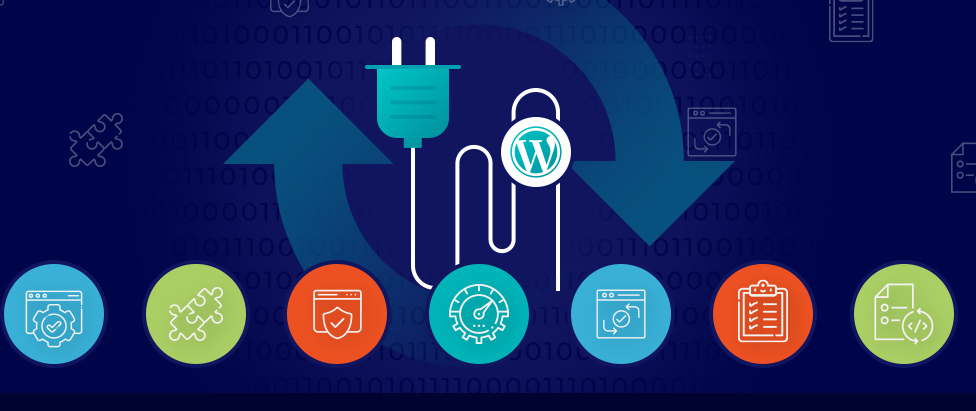Why Update WordPress?
Keeping every part of your WordPress website up to date is crucial, whether it’s plugins, themes, or the core software itself. Regular updates enhance your site’s functionality, performance, and compatibility, but most importantly, they bolster security. WordPress releases major updates, maintenance updates, and security patches periodically. These updates often bring improvements, fix bugs, and address critical security vulnerabilities.
For instance, WordPress version 6.4.3, the latest release, includes fixes for vulnerabilities found in version 6.2.1 and patches for issues related to user-generated data. By not updating your core software, you expose your site to both known and unknown threats.
Difference Between Major and Minor WordPress Updates
WordPress updates come in two types: major and minor.
Major Updates Major updates involve significant changes to the core software, often improving the engine of WordPress. These updates are less frequent, typically released once or twice a year. Each major update is named after a Jazz musician, with the latest one, “Lionel” (named after Lionel Hampton), released in August 2023. To date, there have been 43 major WordPress updates.
Minor Updates Minor updates, on the other hand, focus on bug fixes and minor improvements, not drastically changing the core software. These updates are more frequent, sometimes released just weeks apart. There have been over 500 minor updates to WordPress so far.
How to Know Your WordPress Version
There are two main ways to check which version of WordPress your site is running: through the Admin Dashboard or the Page Source.
Checking via the Admin Dashboard
- Log into your WordPress Dashboard.
- Once logged in, go to the Admin Dashboard.
- Click on “Updates.”
- Here, you can see your current WordPress version and find out if there’s a new update available.
Checking via Page Source If you don’t have login credentials or need a quick check, you can find the version using the Page Source:
- Go to any page on the website.
- Right-click and select “View Page Source” or press CTRL+U.
- Search for the term “generator.” You’ll see the WordPress version listed next to it.
For instance, if your site is currently on version 6.0.5 and you’ve been prompted to update to version 6.2.2, it’s crucial to follow these steps to ensure your site is running the latest and most secure version.

To Double-Check the Update
After updating WordPress, it’s important to verify that the update was successful:
- Log out of your WordPress dashboard.
- Log back in.
- Return to the Updates screen.
You should now see the message: “You have the latest version of WordPress.”
If You Can’t Log In to Your WordPress Dashboard
If you’re unable to log in to your WordPress dashboard, try updating WordPress manually using one of the methods below.
How to Update WordPress Manually via FTP
If you can’t access your dashboard due to a permissions issue or another problem, you can update WordPress via an FTP client. Follow these steps:
- Download the latest WordPress .zip file.
- Extract the .zip file.
- Log in to your site’s server via FTP.
- Navigate to the wp-content folder.
- Right-click the plugins folder and rename it to “plugins.hold” to temporarily deactivate your plugins.
- Delete the wp-includes and wp-admin folders.
- Upload the new wp-includes and wp-admin folders from the .zip file you extracted earlier.
- Upload individual files from the new wp-content folder to your existing wp-content folder. This will overwrite the existing files. Only delete the files in your existing wp-content folder that are being overwritten by new files.
- Upload all new loose files to your public_html folder.
- Rename the “plugins.hold” file back to “plugins.”
You should now be all set. To test the update, visit your /wp-admin page. You’ll likely be prompted to log back in. Once logged in, you should no longer see an update option for the WordPress core in your dashboard.
How to Update WordPress Manually via WP-CLI
WP-CLI is the command-line interface for WordPress. It allows you to update plugins, configure multisite installations, and perform other tasks without using a web browser. Here’s how to update WordPress using WP-CLI:
- Ensure your environment is “UNIX-like” (OS X, Linux, FreeBSD, Cygwin) and that you’re running a relatively up-to-date version of PHP and WordPress (PHP 5.6 or later and WordPress 3.7 or later).
- Download the wp-cli.phar file using wget or curl. You can do this by running one of the following commands:
sh
Copy code
curl -O https://raw.githubusercontent.com/wp-cli/builds/gh-pages/phar/wp-cli.phar
or
sh
Copy code
wget https://raw.githubusercontent.com/wp-cli/builds/gh-pages/phar/wp-cli.phar
- Make the file executable by running:
sh
Copy code
chmod +x wp-cli.phar
- Move the file to a directory in your PATH so you can run it by typing wp:
sh
Copy code
sudo mv wp-cli.phar /usr/local/bin/wp
Once WP-CLI is installed, you can update WordPress by navigating to your WordPress directory in the terminal and running:
sh
Copy code
wp core update
This command will update your WordPress installation to the latest version.
